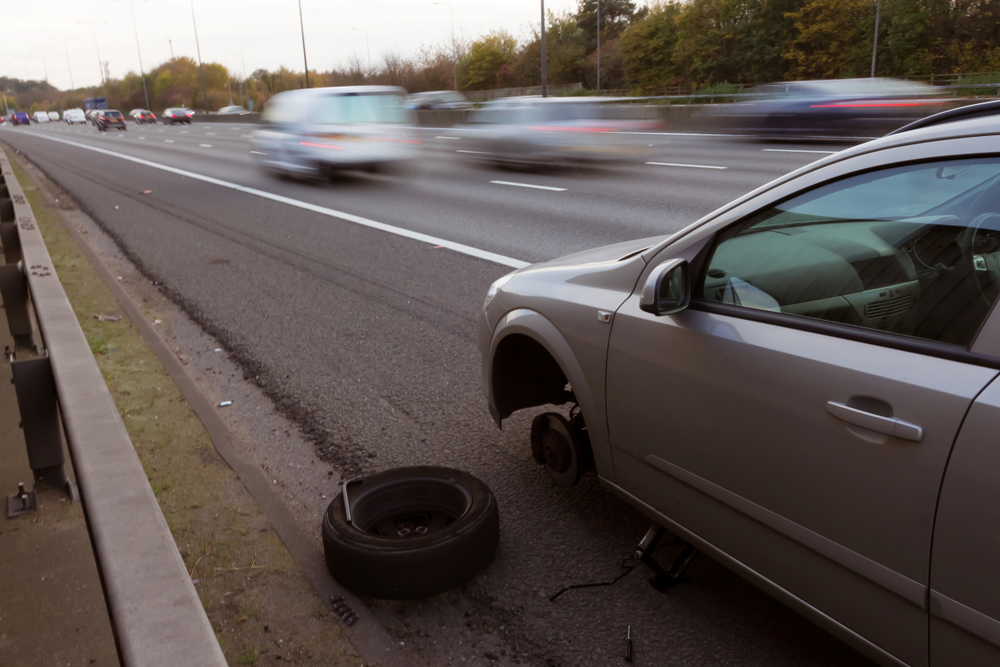A motorway breakdown can effect anyone at anytime. It’s essential to stay safe. When you have a breakdown on a motorway you should do the following:
Get Away From Danger:
Get your vehicle off the road if at all possible. Do not put yourself at risk if this is not at option. Sometimes vehicles breakdown in standstill traffic, giving no option for the driver to head towards the hard shoulder. Other times moving towards the relative safety of the hard shoulder is not possible for a number of reasons. Remember, the Police would you rather concern yourself with your own safety, than trying to dangerously move a broken-down vehicle.
Use The Hard Shoulder:
If you stop on the hard shoulder, keep as far to the left as possible, and ensure your vehicles wheels are turned to the left. This is to help stop the vehicle moving out towards the carriageway should the handbrake fail, or should the vehicle be hit from behind.
Try and stop near an emergency telephone, which are situated approximately one-mile intervals along the hard shoulder.
Leave the vehicle from the left door and ensure your passengers do the same. You MUST leave animals in the vehicle, or in an emergency, keep them under proper control on the verge.
Warning On-Coming Traffic:
Warn other traffic by using your hazard warning lights if your vehicle is causing an obstruction. Hazard warning lights are designed to indicate to other drivers that your vehicle is causing an obstruction.
If possible help other road users see you better. Wearing a light coloured top or even better, a high visibility vest or similar is ideal. You can buy a high-visibility vest from a number of online retailers – probably not much use to you right now if your reading this on the side of a motorway, but certainly something for the future to consider buying.
If it is possible – keep your sidelights on if it is dark or visibility is poor due to rain, fog or mist. Also do not stand or let anyone else stand between your vehicle and on coming traffic. Not only would this put you at risk of being hit, but your body could cover vehicle lighting on one side, which could cause on-coming traffic not to see you, or to think your vehicle is more over to the left than they thought (especially if you are covering the right side lights)
Don’t use a Warning Triangle on a Motorway:
A warning triangle is something you should keep with you. However, note – you should NEVER use a warning triangle on a motorway – this is stated in the Highway Code:
Rule 274: put a warning triangle on the road at least 45 metres (147 ft) behind your broken-down vehicle on the same side of the road, or use other permitted warning devices if you have them. Always take great care when placing or retrieving them, but never use them on motorways.
Other Notes to Consider:
Do not attempt to perform even simple repairs on the side of a motorway
Ensure passengers and yourself are kept away from the carriageway and children and animals are kept under control.
If you can contact your breakdown service provider from your mobile – then do so once you are clear from the vehicle if possible. If you don’t have a mobile then walk to the nearest emergency telephone. Remember to follow the arrows on the posts at the back of the hard shoulder. When you are using these phones always face oncoming traffic.
If you feel at risk from another person, return to your vehicle by the left hand door and lock all doors. Leave your vehicle as soon as it is safe to do so.
If you are a lone female or a female with children, ensure you state this when calling your breakdown provider, or when talking to the operator from an emergency phone.
Once you are safely away from the vehicle, and are awaiting rescue, you should contact friends to say you will be late. Waiting times for recovery can range from 10 minutes to over 2 hours. Although you should have an indication of waiting times when you make the initial rescue call.

